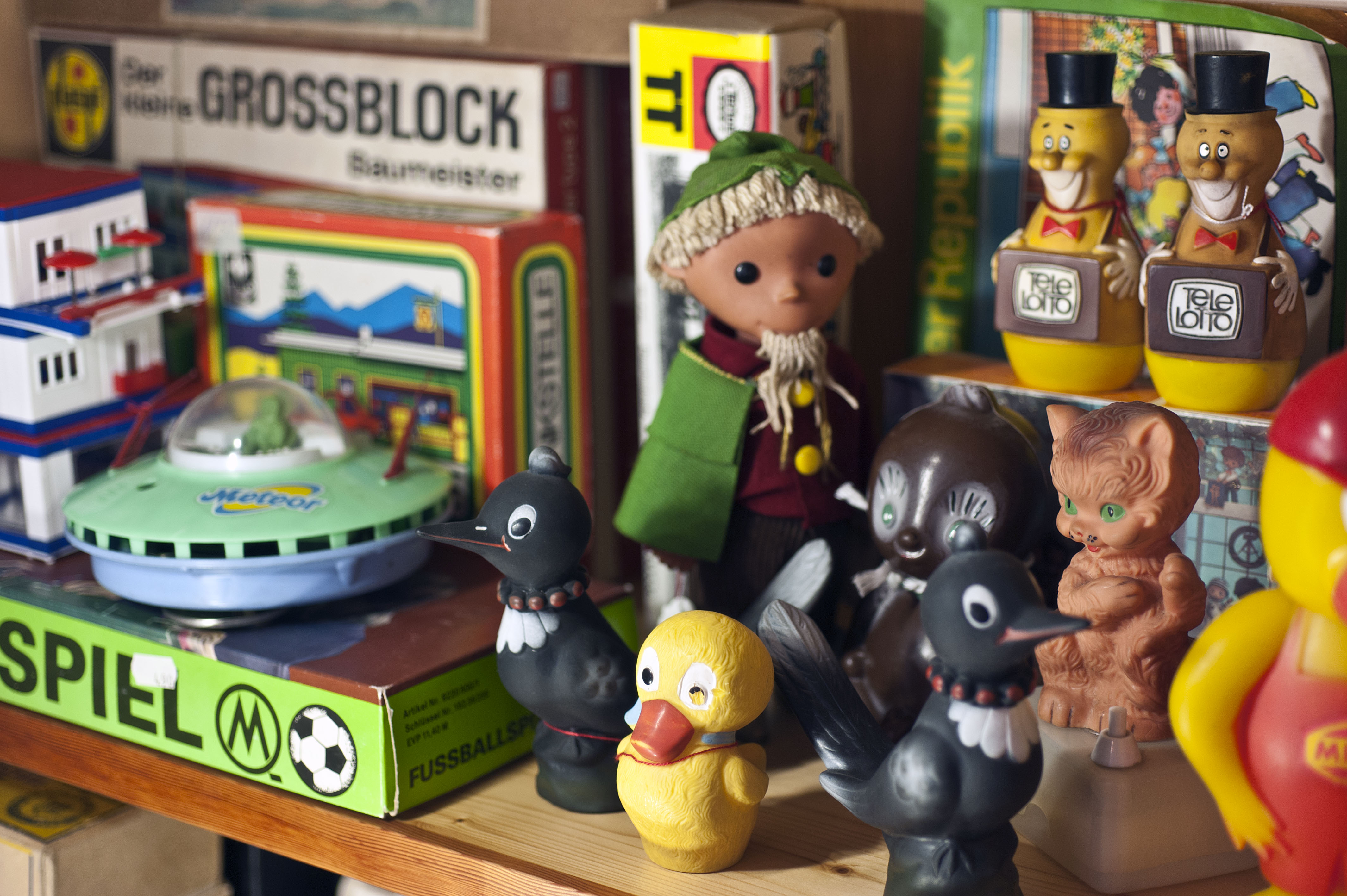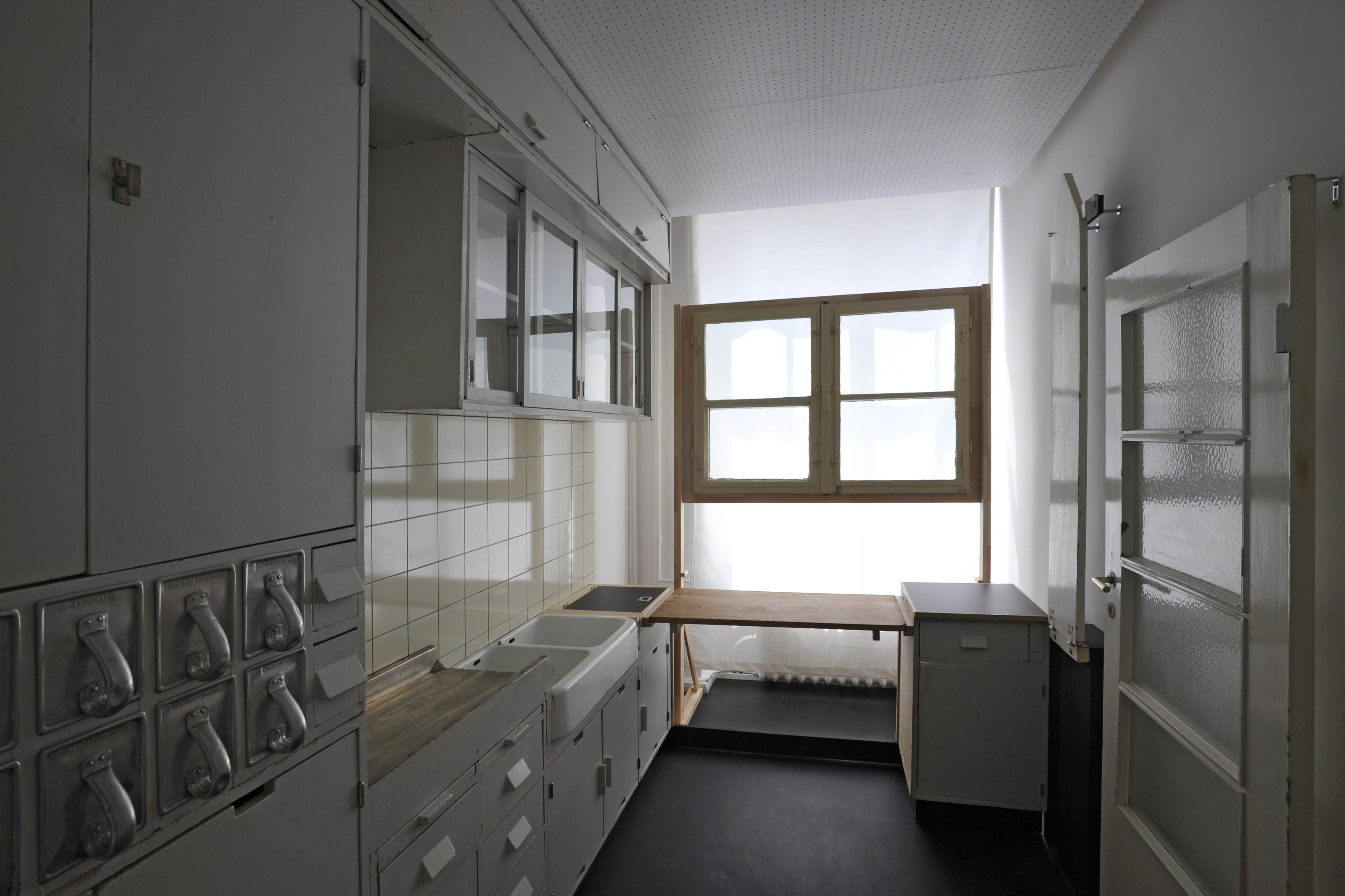Student Wendy Fraser (BA (hons) History of Art and Design) opened the cupboards in a real-life Frankfurt Kitchen whilst learning how ‘good design’ was promoted in Germany
In November, second year students on the History of Art and Design trip to Berlin visited the Werkbundarchiv-Museum der Dinge (Museum of Things) in the creative Kreuzberg district. The museum houses a collection of 40,000 German objects manufactured in the 20th and 21st centuries in addition to 35,000 documents in the archive of the Deutscher Werkbund (German Association of Craftsmen). The Werkbund, an association of designers, architects, industrialists, publishers and teachers founded in Munich in 1907, shared similar concerns to William Morris’ earlier Arts and Crafts Movement in Britain. However, although they advocated aesthetic education, sensitivity to materials, quality and durability, their interests diverged from Morris’s ideals in their promotion of modern design and excellence in mass production, aiming to create a cultural utopia.
 Figure 1: The museum’s main display area with contrasting exhibits displayed in cabinets. Photograph by Armin Hermann. Image courtesy of Museum der Dinge.
Figure 1: The museum’s main display area with contrasting exhibits displayed in cabinets. Photograph by Armin Hermann. Image courtesy of Museum der Dinge.
The Museum der Dinge is located at 25 Oranienstraße and its compact space on the third floor of the building houses a shop, the main display area with glass-fronted shelved cabinets and a separate room with an example of the modernist Frankfurt Kitchen. The cabinets contain an astounding array of exhibits including crockery, kettles, toys, lamps, clocks, shoes, typewriters, tools, telephones, technology, glassware, furniture, and tins. The objects displayed exemplify the concerns of the Werkbund to preserve the quality of manufactured goods during the industrialisation of Germany and their aim to create a cultural utopia via excellence in German factory production. Handcrafted objects are shown with those that are mass produced by machine, named designers alongside anonymous makers, professionally made next to inexpertly produced items, articles made in West Germany compared with those made in the DDR (East Germany) and genuine products displayed alongside counterfeits.

Figure 2: Selection of items made in the DDR. Photograph by Armin Hermann. Image courtesy of Museum der Dinge.
The Werkbund also aimed to educate in matters of taste. The Department of Aesthetic Aberrations was created at the Stuttgart State Crafts Museum in 1909: 900 ‘bad taste’ articles chosen to demonstrate to the public what not to buy. Conversely, the publication of the ‘Deutches Warenbuch’ from 1915-1927 showed 1600 approved everyday objects as a guide for retail buyers and a pattern book for designers. While all of this may sound a little dry, the museum’s display concept invites the visitor to compare the contrasting qualities of the exhibits. The Werkbund viewpoint of appropriate design is juxtaposed with objects of opposing values. Accordingly, examples of ‘good design’ are shown with the kitsch holiday souvenirs they abhorred, licensed character merchandise and some chilling Third Reich goods such as SS figurines and Swastika mugs.
My favourite exhibit was the room containing the Frankfurt Kitchen: visitors can walk into the room, open the cupboards, pull out the aluminium storage containers and chopping board and really feel what it would be like to use the space. As it was the topic of my forthcoming seminar presentation, it was really valuable to experience the kitchen I had previously been studying only in books.

Figure 3: View of the Frankfurt Kitchen from the doorway. Photograph by Armin Hermann. Photograph courtesy of Museum der Dinge.
Ultimately, the Museum der Dinge is an account of the Werkbund’s achievements as an association and with the exception of the Frankfurt Kitchen installation, what is missing for me is the human element. Although a large number of the exhibits are everyday possessions rather than the elite items that we are most used to seeing in museums, it is not the stories of the makers and the owners that are being prized in this museum. That is not to say that there are not fascinating things to see – despite the rather academic narrative, the museum is full of wondrous objects and is worth a visit. It is a trip through the mind boggling factory output of the 20th century and the ‘bad taste’ items are as pleasurable to view as the ‘good design’ products are inspiring and informative.



